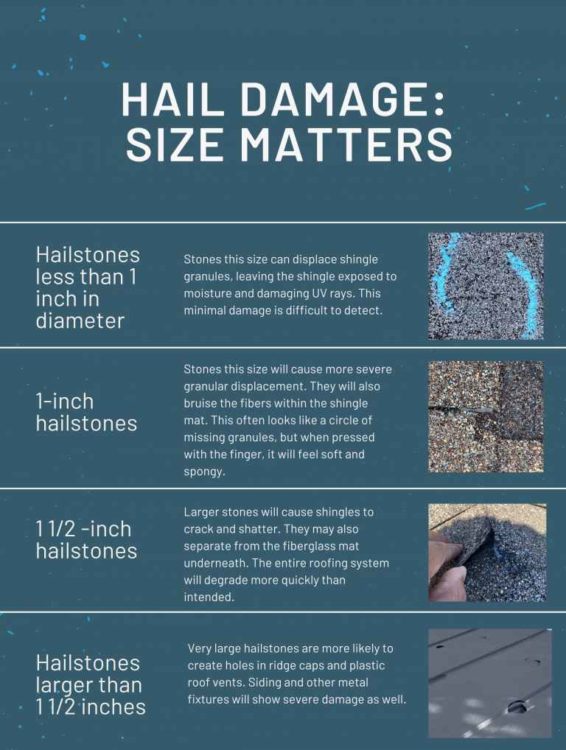If you’ve ever witnessed a hailstorm, you know how hard hailstones can hit the ground… and your property. As children, hail brings about a sense of excitement and wonder. As adults, it’s more likely to create a pit in our stomachs as we think about possible damage and costly repairs – to our cars, our siding, our gutters, our roofs, and other property. We know it’s bad, but what exactly happens when hail strikes?
What is Hail?
Unlike frozen rain that falls as water and freezes near the ground, hail causes much more damage because it begins its fall as a solid. A hailstone starts as a drop of water that freezes when it gets pushed into the high, freezing regions of a storm cloud. As it falls back into the warmer, lower region of the cloud, it collects more water vapor before getting pushed back upward and freezing again. This cycle continues and the hailstone grows in size until gravity pulls it crashing toward the ground. Click here to see 15 of the worst hail storms ever!
What Does Hail Damage Look Like?
The impact from a hailstone that is less than one-inch in diameter produces relatively little damage to a home or roof; however, it can dislodge the granules (small ceramic-coated rock specs) from the top of the shingles. While seemingly minor, this damage leaves the asphalt coating open to the elements and will cause the shingles to age more quickly, shortening the life of your roof. Depending on wind speed and the density of the hailstone, smaller hail can also leave dings or small dents in vinyl siding, metal fascia, and painted decking.

Hailstones that are one inch in diameter will cause much of the same damage mentioned above; however, they will also cause bruising to the shingle underlayment. A bruise can first appear as a circle of displaced granules, but you will also feel a soft or spongy indentation or divot that may not be visible to the eye. This bruise indicates that the hail hit with enough force to cause the fibers within the shingle mat to loosen and begin to separate. Bruised portions are more susceptible to ripping and tearing, especially since they will also be more affected by sun and weather conditions.
Hail greater than one inch in diameter will cause more obvious damage. You may see circular cracks in shingles, which leave bare spots on your roof. Hail impact may also cause the shingle surface to shatter, causing it to separate from the fiberglass mat underneath. The fiberglass mat may also crack. While these may not cause your roof to leak immediately, over time, these exposure to UV rays from the sun will cause the shingle to degrade faster and cracks or tears will develop or worsen.
When Should You Have Your Roof Inspected for Hail Damage?
Hail damage can vary greatly, not only depending on the size of the hail, but also the density and shape of the hail, wind speed and direction, the building materials and the age of those materials, the slope of the roof, and any barriers around the house, such as trees. If you know that a hailstorm impacted your roof or your neighbors have confirmed hail damage, it’s a great idea to have your roof inspected, especially because hail damage is often not visible from the ground or even the edge of your roof.
If you see dents or divots in your gutters, gutter screens, or downspouts, or if you see loose shingle granules gathered in your gutters, you should definitely have your roof inspected by professional roofers. A bad hail storm will also cause damage to siding and decks and is another sure sign that your roof needs an inspection.
Having shingles replaced or granules replaced on bruised shingles will lengthen the life of your roof and decrease the unpleasant chance that you’ll deal with a leak. If your roof may have been affected by hail, Rojas Roofing is ready to inspect your roof! Call us at (317) 864-6193. We pride ourselves on taking excellent care of your roof during new installations and the periods between.
Filed Under: Roof, Useful Tips
